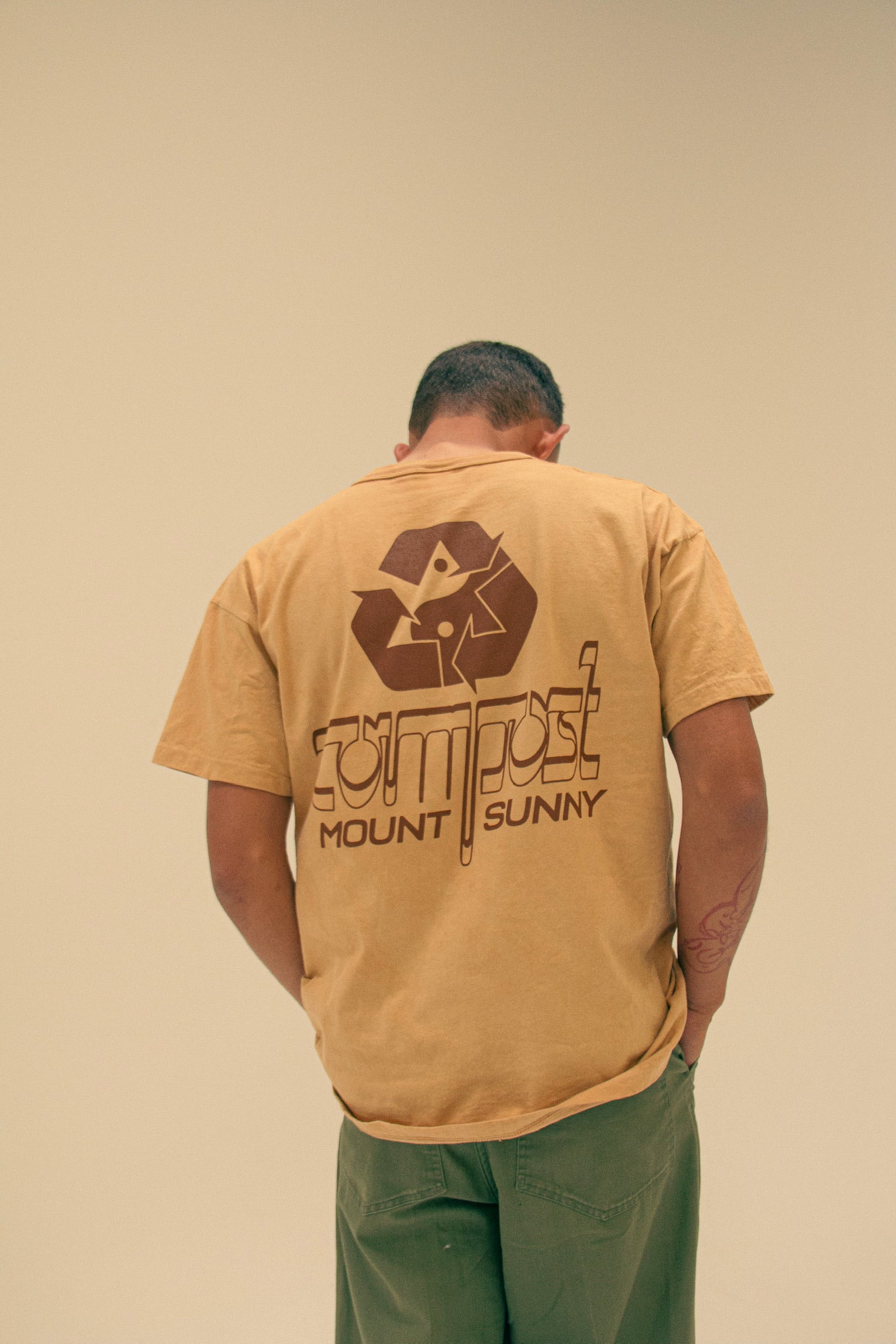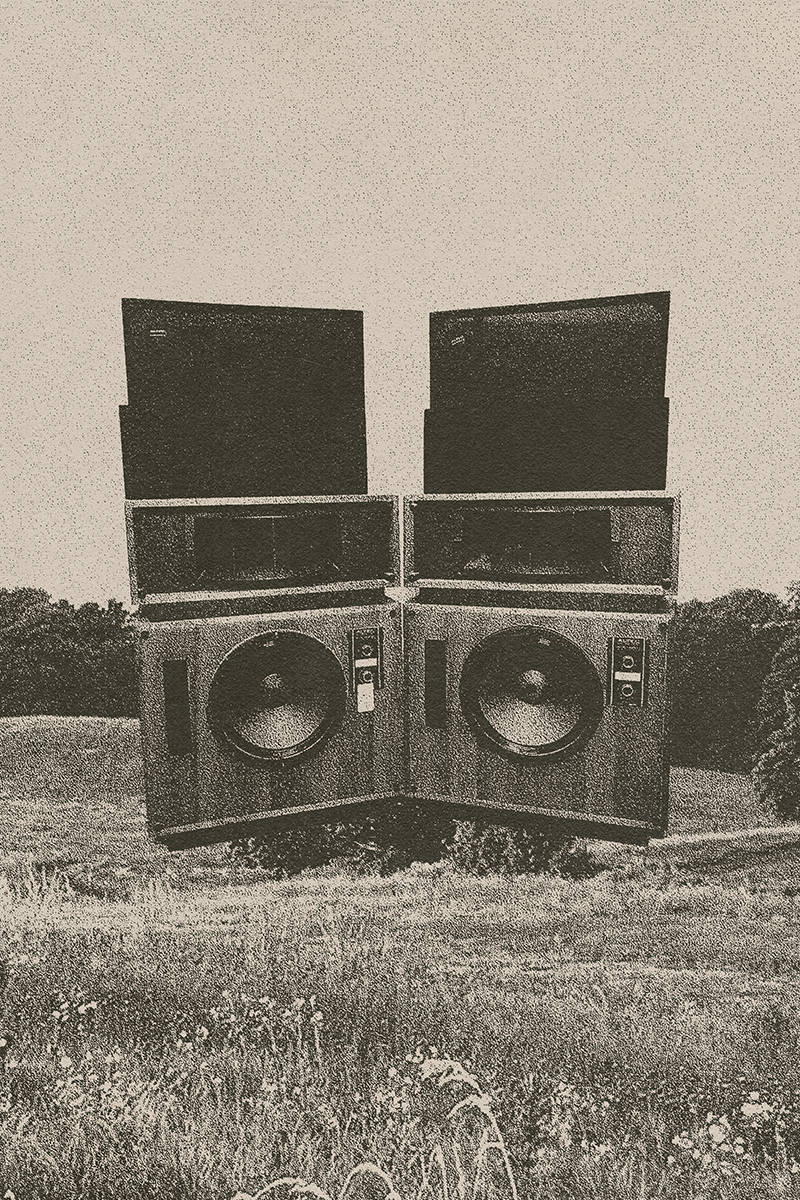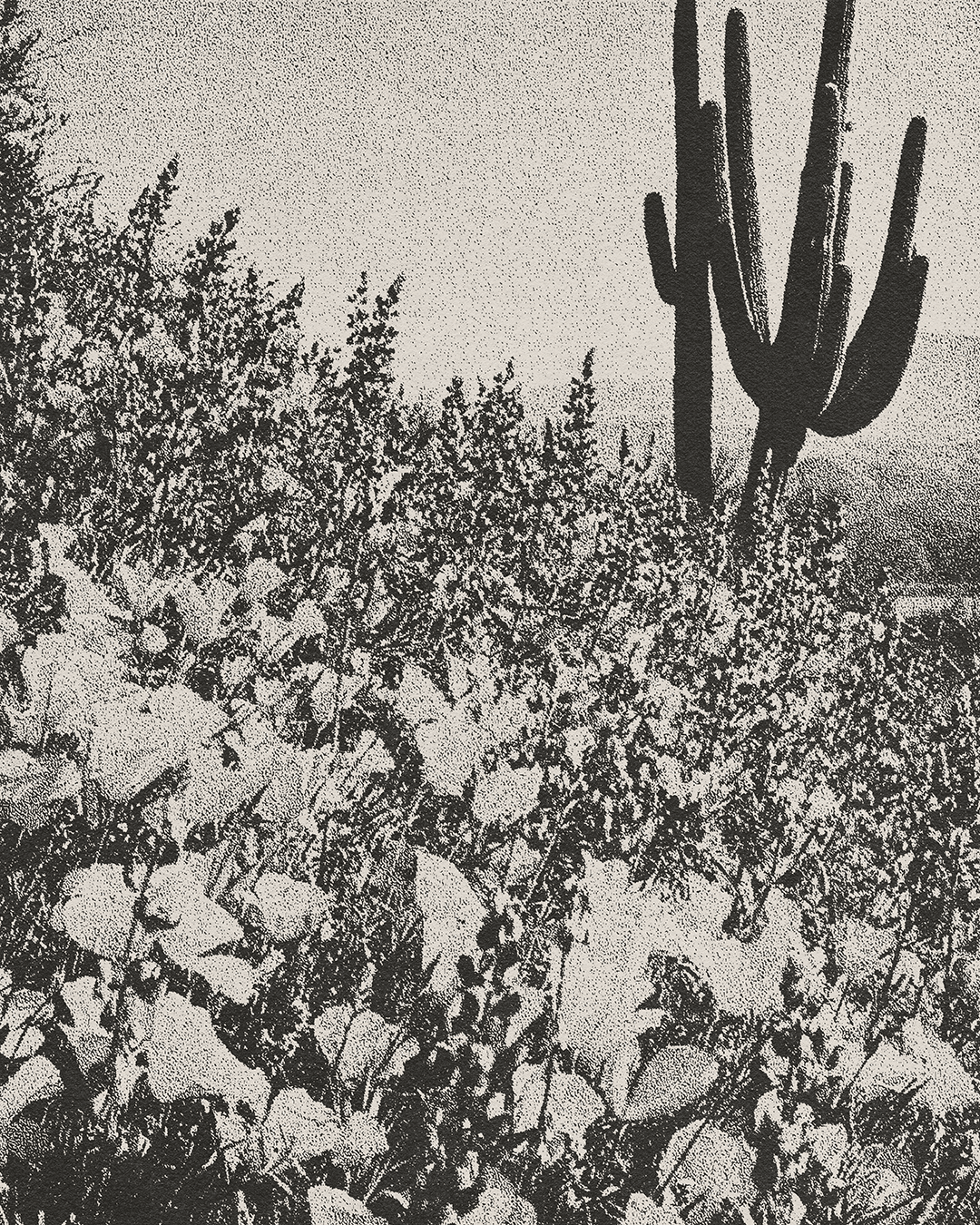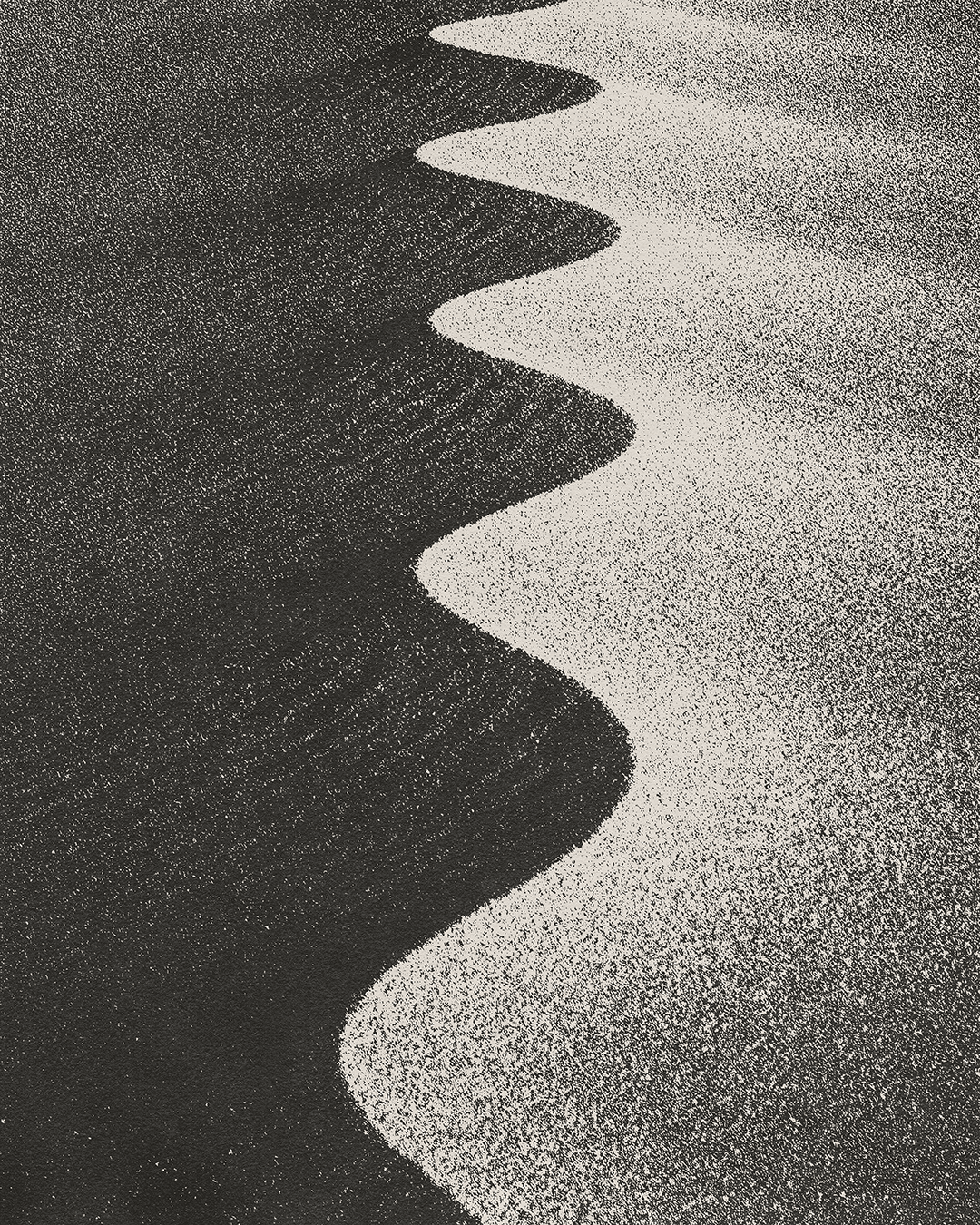

Earth Day 2021: "COMPOST OR DYE" FURTHER LOOK
From our very inception, the focus of Mount Sunny has been to marry what goes in your body with what goes on your body. Clothing has been, and will continue to be, one of our mediums for healing and a way for us to explore our relationship with the world around us. Mount Sunny is our love song with the Earth and one part of our vision for a greater future. Our Garden Club collections, as one part of this vision, focus on using clothing as a starting point for discussions surrounding our relationship with the Earth.
As a follow up to last year’s Garden Club collection, Compost or Dye features dye from actual food waste. We are consistently inspired by the beauty of composting; the breakdown of past life to feed the birth of new life and the nutrient rich soil that develops from simple food scraps. It’s the most basic piece of circular life and an important part of the new circular economy. But, years ago, in our conversations about compost, we realized there had to be a step in between the consumption and compost food cycle for even more use of food scraps. So when we were researching natural dyes and we discovered food waste dyes, we were ecstatic. Food waste dyes are another opportunity to bring us closer to what we wear and they’re another tool to most efficiently utilize our everyday waste.
Waste- the ever-nagging concern. It’s something we think about all the time. It’s unavoidable and unfortunate. But how often do most of us think about food waste? Well, it should be at every meal. Alarmingly, the USDA reported that 30-40% of all food in the United States is thrown away, resulting in waste valued at $161 billion. While most of this waste is from uneaten food, it still highlights a significant issue. Consider how much waste results from simply cooking a meal- fruit and vegetable skins, seeds and pits, maybe nut hulls. It may be an initial reaction for all of us to toss this in the garbage can, but composting is a simple but effective solution. Fortuitously, composting is entering the mainstream, as evidenced by an EPA report from 2017 that found composting tonnage increased by 15% since 2015.
So, what is it about composting that’s so important? Well, when we dump our food scraps in trash those scraps end up in a landfill. In landfills, biodegradable waste, such as food waste, decomposes in the absence of oxygen and thus produces methane gas, a powerful greenhouse gas that’s 34 times more powerful than carbon dioxide. If food waste is collected, composted, and added to soil, it results in improved soil health, a significant enrichment of the soil, and an improvement of the soils physicochemical properties. Overall, the result is healthier soil, healthier plants, and a healthier earth.
As clothing fanatics, we’re always thinking about innovative ways to implement sustainability in our garments. When we discovered food waste dyes, we knew we had to develop and use some of our own. Food waste dye itself is nothing new—it’s been utilized for hundreds of years. Black walnut hulls, as used by the Vikings, are one option. Or even beets, onion skins, purple cabbage, blueberries, lemon skins; the list of options goes on and on.
Our first dye is an irregular faded pink color that's achieved by using the skins and pits of discarded avocados. We worked with our neighbors at Valentine restaurant in Phoenix to collect the remnants of the avocados they use in their dishes. We then take these remnants and develop a rich red dye bath. The pits and skins of avocados are loaded with tannins which create an unexpected but beautiful pink color on fabric. The dye bath can be exhausted in batches, with each batch resulting in a lighter and lighter pink color.
Our second dye is a warm brown color brought to life by heartwood of an Indian acacia tree, called Catechu (Er Cha 儿茶 ). Often used for its ability to tan and dye clothing, it also has medicinal benefits observed in traditional Chinese medicine. Its properties are bitter, astringent and cooling– which is why it is applied topically for sores and open wounds to generate flesh and to aid in the arrest of bleeding. This herb is often used for sports injuries, such as bruising, and is seen in traditional formulas such as the centuries-old Dit Da Jow. Continuing to utilize and infuse natural medicine in clothing is the bridge between what goes in and on your body.
This release also marks our second foray into cut and sew garments with the returning Garden Shirt and the new Garden Pant. These items are cut and sewn at a factory in India with decades of experience in sustainable and ethical manufacturing. The factory is SA 8000 certified (social accountability) and ISO 9001 (environmental responsibly). They are also stringent in their sourcing- exclusively sourcing from sustainable and responsible mills that must be certified, whether that be GOTS, OEKO, or ISO, among others, depending on material. The factory also has an onsite washhouse with a self-sustaining water treatment system. Rain water is harvested and utilized for the wash process, then treated post-wash through a reverse osmosis process, and finally used as irrigation for their on-site garden. It’s a truly circular process and it inspires our own work at Big Sun MFG.
Each piece is sewn in a lightweight, slubby Linen/Lyocell blend fabric. Lyocell is a miracle fiber in many ways. It’s a cellulose fiber that’s made by dissolving wood pulp to be spun into long staple fibers. The resulting fibers are similar in hand feel to rayon, but without the harmful waste that the rayon process creates. It’s one of the most sustainable fabrics on the market. We opted to mix linen with this lyocell to give the fabric a little more body and slub. The fabric is breathable, moisture wicking, and, most importantly, perfect for hot desert summers.
As we work to minimize, and most efficiently utilize the waste we do make; food waste dyes are the perfect middle step between eating and composting. We’re excited to continue to utilize both waste and medicine in our clothing as a medium to bridge the gap between what goes in and on your body. A big thank you to our friends @valentine_phx for setting aside their avocado waste for us- we couldn’t have done it without them.
More Reading
-

The Healing Environment: How Set and Setting Shape Healing
Explore how thoughtful surroundings and mental preparation create space for healing. Learn how environment shapes calm, focus, and deeper restoration.
-

Spring Renewal: Supporting Your Body's Natural Rhythm
Discover gentle ways to align with spring’s renewal. Learn how awareness and ritual can help your body move with the changing seasons.
-

Finding Balance: Gentle Approaches to Stress Relief
Understand how the body expresses stress and how to soften its effects. Simple practices and herbal allies support steadiness through daily life.



